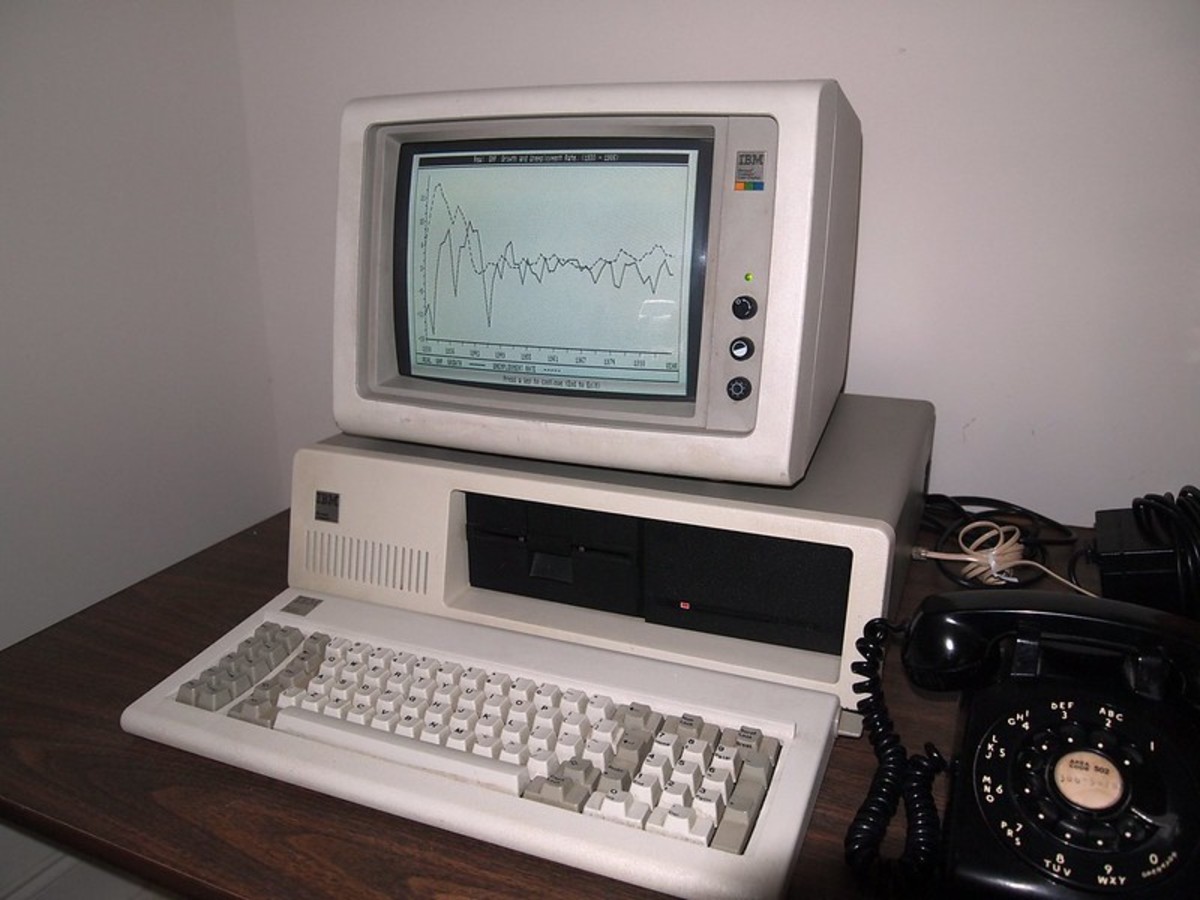Picture by Fried Dough is marked with Public Domain Mark 1.0.
1. First Computers
Computers have been in use since the forties when they were used to crack German codes in WW2. They were initially single-purpose machines, occupying whole rooms. The first programmable computer was designed by Konrad Zuse in 1941. It used punched film for instructions and had an astounding speed of 5-10Hz. However the first programmable computer actually built was the ENIAC in 1945. Designed by John and Klara Von Neuman, this computer was used to run simulations of neutron decay in nuclear fission.
2. First Microprocessor
In 1971 Intel released the first commercially available microprocessor: the Intel 4004. It was a 16-pin microchip with 2300 transistors. Today the Apple M1 has 16 billion transistors, and the server-grade AMD Epyc can go up to 40 billion transistors. Picture by Dennis S. Hurd is marked with CC0 1.0.
3. Transistor Size
The transistors used in computers get smaller every year. They have also become so small and ubiquitous that they can now be found in almost every electronic device you own from your TV to your car. The first transistors, however, measured around 1cm (0.3 inches) and nowadays they go down to a few nanometers. A nanometer (1nm) is around 0.00000003937 inches, way less than the thickness of an hair, and almost as small as as molecules and atoms! Look at your nails and count one second; a nanometer is what they’ve grown while you were looking.
4. New Jobs and Industries
Computers created many jobs, even entire industries, that didn’t exist before, such as software development and computer technology. They also made certain jobs obsolete, like telephone switchboard operators and typesetters. In the 21st century, they have even taken over as the main way we communicate with each other, be it by messaging apps, email, or even video calls. Photo by FritzchensFritz marked with CC0 1.0.
5. Magnetic Tape
Magnetic tape storage has been in common use since the 1950s. Today it still takes the prize of having the highest capacity among all storage types, with a whopping 580TB record set by IBM and Fujifilm in 2020. The downside to tape storage is that it takes a long time for tapes to be read or written. Picture by Hannes Grobe is licensed under CC BY 3.0.
6. First Woman Programmers
One of the first woman computer programmers was Grace Hopper, who started programming in 1947 at Harvard University. She is also the inventor of COBOL, a computer programming language still used in banking and government today.
7. First Algorithm for a Computer
Ada Lovelace wrote the first algorithm for Charles Babbage’s theoretical “difference engine”—or computer. In 1843, she was also the first to recognize that computers could be used for more than just mathematical calculations. She wrote about how they could create music and art as well.
8. The Internet
The internet as we know it was invented in 1983 by Tim Berners-Lee, who is also known as “the father of the web.” He created HTML, or HyperText Markup Language, which allows us to create websites and other online content. Today, there are about 5 billion people using the internet regularly, and more than 1 billion sites still made with the latest versions of HTML. Picture jurvetson is licensed under CC BY 2.0.
9. First Internet Cat
Believe it or not but the first image on the internet was a picture of a cat. It was created by an engineer named Robert T. Morris, who also invented the term “worm” for a computer virus. He was also the first person to create a virus that would spread throughout the internet.
10. Botnets
Botnets are advanced malicious programs that will infect everything from personal computers to home routers. The infected computers will do the bidding of the owners of the botnet want, and are used to attack large companies and governments. One of the largest botnets was Mariposa which controlled around 12 million computers. Picture by Sam Beebe licensed under CC BY 2.0. This content is accurate and true to the best of the author’s knowledge and is not meant to substitute for formal and individualized advice from a qualified professional. © 2022 Gondisalvus





